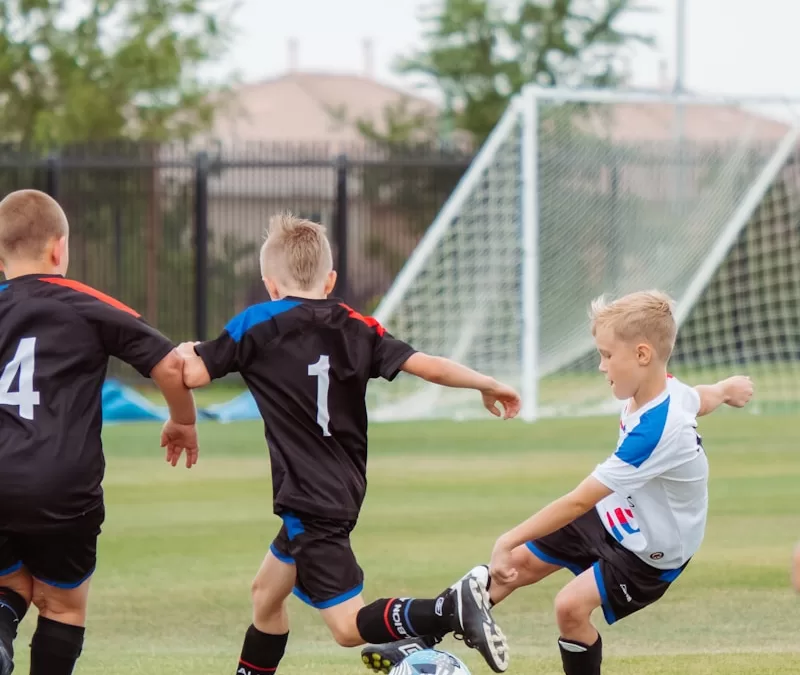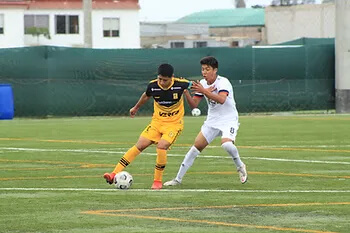
Understanding Sever’s Disease: A Common Foot Condition in Active Growing Children
Understanding Sever’s Disease in Growing Children
Sever’s disease — medically known as calcaneal apophysitis — is a common heel condition affecting active children, especially during growth spurts. Despite its name, it’s not a “disease” in the traditional sense, but an overuse injury of the growth plate at the back of the heel.
What Causes Sever’s Disease?
Sever’s disease develops when repetitive stress irritates the growth plate in the heel bone (the calcaneal apophysis). During adolescence, especially between ages 8–15, the heel bone may grow faster than the surrounding muscles and tendons, causing excessive tension at the Achilles insertion site. When coupled with repetitive impact — such as running, jumping, or playing on hard surfaces — this mechanical overload leads to inflammation and pain.
It’s especially common in sports like soccer, basketball, AFL, netball, and gymnastics. Kids going through growth spurts, or who are highly active without sufficient recovery, are most at risk. Tight calf muscles, poor footwear, and biomechanical factors like flat feet or poor shock absorption may also contribute.
Common Symptoms
The main symptom is heel pain that worsens during physical activity and settles with rest. Children may complain of:
Pain or tenderness at the back or underside of the heel
Limping or toe-walking, particularly after sport
Discomfort when pressing on the heel or squeezing it from both sides
Stiffness first thing in the morning or after periods of inactivity
Symptoms are usually one-sided but can be bilateral. If left unaddressed, the pain can start to interfere with participation in sport and physical education at school.
Diagnosis
A diagnosis is usually made through clinical history and physical examination by a physiotherapist. Key indicators include heel pain during activity, recent growth, and tenderness at the posterior heel. The “squeeze test” — applying gentle pressure to both sides of the heel — is often positive.
Imaging (X-ray or MRI) is rarely needed unless symptoms persist longer than expected, or there is suspicion of another diagnosis. Importantly, a visible growth plate on X-ray in this age group is normal and not a reason for concern in itself.
Treatment and Management
Treatment is focused on reducing inflammation, offloading the heel, and supporting the child’s return to normal function. It is important to reassure both child and parent that this is a temporary, self-limiting condition.
Key management strategies include:
Load modification: Avoiding or reducing high-impact activity is key, especially sports with frequent jumping or sprinting. Your physio can help create a weekly plan to reduce flare-ups while keeping your child engaged and active.
Ice: Icing the heel after sport can reduce inflammation and pain, especially in the early stages.
Heel lifts or orthotics: Studies, including the 2016 randomised trial by James et al., show that both orthotic devices and cushioned heel lifts can effectively reduce heel stress. These inserts help absorb shock and reduce Achilles tendon tension.
Calf stretching and strengthening: Tight calf muscles increase load on the heel. Scharfbillig et al. (2008) emphasised the role of flexibility programs, particularly eccentric calf training, in improving outcomes.
Footwear advice: Supportive, well-fitted athletic shoes are essential. Avoid barefoot running or flat-soled footwear during recovery.
Manual therapy and taping: In some cases, hands-on techniques and taping methods may be used to reduce load on the Achilles insertion.
According to the trial by Weert et al. (2016), physical therapy combining load management and exercise-based rehab was just as effective as orthotic devices. This supports a flexible treatment approach tailored to the child’s specific needs and activity level.
Medication: Short courses of anti-inflammatory medication such as ibuprofen can help in more severe cases, especially when pain interferes with sleep or daily function. However, these should always be used under medical advice.

Prevention and Long-Term Outlook
The prognosis for Sever’s disease is excellent. Most children recover fully once the growth plate fuses — typically by age 15 for boys and 13 for girls. The condition does not cause permanent damage, though symptom duration can vary from a few weeks to several months depending on activity levels and adherence to management.
To reduce the risk of recurrence:
Encourage a proper warm-up and cool-down routine
Ensure sport participation is balanced with adequate rest
Maintain calf flexibility and foot strength
Use shock-absorbing shoes or orthotics during growth spurts
Avoid large increases in training volume or intensity
It’s also helpful to educate kids and parents that some discomfort during growth phases is normal, but persistent pain warrants a review. At Praxis Physiotherapy, our clinicians are experienced in managing growing athletes — and ensuring they don’t miss more game time than necessary.
Summary
Sever’s disease is a common and manageable cause of heel pain in growing children. Early recognition, temporary load reduction, and a guided rehab program can ensure a smooth recovery and quick return to sport. If your child is experiencing heel pain that isn’t improving with rest, book in with the friendly and knowlegable team at Praxis Physiotherapy for a tailored management plan.
Until next time, Praxis What You Preach
📍 Clinics in Teneriffe, Buranda, and Carseldine
💪 Trusted by athletes. Backed by evidence. Here for everyone.
References
James, A. M., Williams, C. M., & Haines, T. P. (2016). Effectiveness of footwear and foot orthoses for calcaneal apophysitis: a 12-month factorial randomised trial. British Journal of Sports Medicine, 50(20), 1268–1275. https://doi.org/10.1136/bjsports-2015-094986
Scharfbillig, R. W., Jones, S., & Scutter, S. D. (2008). Sever’s Disease: What Does the Literature Really Tell Us? Journal of the American Podiatric Medical Association, 98(3), 212–223. https://doi.org/10.7547/0980212
Weert, H. C., van Dijk, C. N., & Struijs, P. A. (2016). Treatment of Calcaneal Apophysitis: Wait and See Versus Orthotic Device Versus Physical Therapy. Journal of Pediatric Orthopaedics, 36(2), 152–157. https://doi.org/10.1097/BPO.0000000000000417
